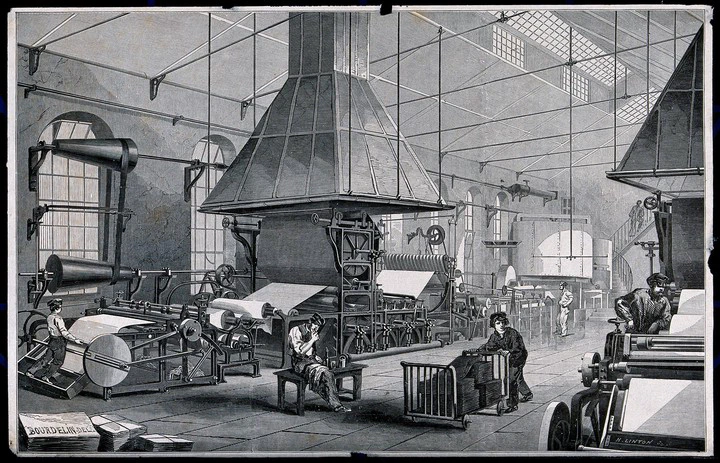Efficient Editing
 Papeterie Darblay, Essonne, Ile de France. Wood engraving by H. Linton, 1859, after E. Bourdelin. Wellcome Collection. Public Domain Mark.
Papeterie Darblay, Essonne, Ile de France. Wood engraving by H. Linton, 1859, after E. Bourdelin. Wellcome Collection. Public Domain Mark.Digital Critical Editions are onerous. The labor of transcription, translation, and annotation that a highly qualified workforce must carry out represents thousands of hours of work and requires substantial funding, in addition to long-term institutional support.
In a sense, that high-visibility projects in the Digital Humanities can obtain the vast amounts of funding necessary to run is a blessing.
Yet heavy reliance on the largesse of wealthy foundations, universities, and government agencies, the prolonged need for important human resources, does not constitute a viable economic model for the future. If more and more scholars can afford to produce ambitious digital editions of primary source documents, this practice remains the privilege of a few wealthy countries, reinforcing thus their cultural hegemony.
To make historical documents from all over the world accessible to a broader public, the cost of Digital Critical Editions should decrease by orders of magnitude.
In this series of blog posts, I evaluate the different approaches and technological bricks that scholars from all over the world can use to publish primary source documents more rapidly and at minimal expenses.
I will evaluate, in particular, technologies such as machine learning, blockchain, and decentralized storage.